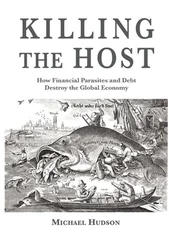Mariana Mazzucato - The Value of Everything - Making and Taking in the Global Economy
Здесь есть возможность читать онлайн «Mariana Mazzucato - The Value of Everything - Making and Taking in the Global Economy» весь текст электронной книги совершенно бесплатно (целиком полную версию без сокращений). В некоторых случаях можно слушать аудио, скачать через торрент в формате fb2 и присутствует краткое содержание. Год выпуска: 2018, ISBN: 2018, Издательство: Penguin Books Ltd, Жанр: economics, на английском языке. Описание произведения, (предисловие) а так же отзывы посетителей доступны на портале библиотеки ЛибКат.
- Название:The Value of Everything: Making and Taking in the Global Economy
- Автор:
- Издательство:Penguin Books Ltd
- Жанр:
- Год:2018
- ISBN:9780241188828
- Рейтинг книги:3 / 5. Голосов: 1
-
Избранное:Добавить в избранное
- Отзывы:
-
Ваша оценка:
- 60
- 1
- 2
- 3
- 4
- 5
The Value of Everything: Making and Taking in the Global Economy: краткое содержание, описание и аннотация
Предлагаем к чтению аннотацию, описание, краткое содержание или предисловие (зависит от того, что написал сам автор книги «The Value of Everything: Making and Taking in the Global Economy»). Если вы не нашли необходимую информацию о книге — напишите в комментариях, мы постараемся отыскать её.
The Value of Everything: Making and Taking in the Global Economy — читать онлайн бесплатно полную книгу (весь текст) целиком
Ниже представлен текст книги, разбитый по страницам. Система сохранения места последней прочитанной страницы, позволяет с удобством читать онлайн бесплатно книгу «The Value of Everything: Making and Taking in the Global Economy», без необходимости каждый раз заново искать на чём Вы остановились. Поставьте закладку, и сможете в любой момент перейти на страницу, на которой закончили чтение.
Интервал:
Закладка:
76. See ibid. for a rigorous but accessible explanation of the classical theory of surplus value and how it can be used to provide an alternative interpretation of the so-called ‘new economy’.
77. https://www.theguardian.com/commentisfree/2016/dec/04/data-populists-must-seize-information-for-benefit-of-all-evgeny-morozov
78. H. A. Simon, ‘Public administration in today’s world of organizations and markets’, PS: Political Science and Politics , December 2000, p. 756.
79. https://www.theguardian.com/technology/2016/jun/09/uber-suffers-legal-setbacks-in-france-and-germany https://www.theguardian.com/technology/2016/jun/08/berlin-ban-airbnb-short-term-rentals-upheld-city-court https://www.theguardian.com/media/2016/may/25/netflix-and-amazon-must-guarantee-20-of-content-is-european
80. For a discussion of the criteria and implementation issues behind mission-oriented policies see my recent report, M. Mazzucato, Mission-oriented research & innovation in the European Union – A problem-solving approach to fuel innovation-led growth , European Commission, 2018.
81. Such thinking is indeed what has inspired Mission Innovation (MI; http://mission-innovation.net), an alliance of twenty-two ministers and the European Union to combat climate change through national commitments (around $20 billion) to invest in clean energy innovation. The coalition was announced on 30 November 2015 during the COPS meeting in Paris. On the private-sector side the Breakthrough Coalition is committing an equal amount of money. Since 2014 I have been leading a project on the need for such mission-oriented thinking in innovation: http://marianamazzucato.com/projects/mission-oriented-innovation-policy/
8. UNDERVALUING THE PUBLIC SECTOR
1. https://www.gov.uk/government/speeches/mansion-house-2015-speech-by-the-chancellor-of-the-exchequer
2. ‘The third industrial revolution’, The Economist , 21 April 2012: http://www.economist.com/node/21553017
3. K. Polanyi, The Great Transformation: The Political and Economic Origins of Our Time (1944; Boston MA: Beacon Press, 2001), p. 144.
4. C. M. Reinhart and K. S. Rogoff, ‘Growth in a time of debt’, American Economic Review , 100(2) (2010), pp. 573–8.
5. Ibid., p. 573.
6. T. Herndon, M. Ash and R. Pollin, ‘Does high public debt consistently stifle economic growth? A critique of Reinhart and Rogoff’, Cambridge Journal of Economics , 38(2) (2014), pp. 257–79: http://doi.org/10.1093/cje/bet075, p. 5.
7. Ibid., pp. 7–8.
8. Reinhart and Rogoff: http://www.nytimes.com/2013/04/26/opinion/debt-growth-and-the-austerity-debate.html?_r=0and Reinhard and Rogoff: http://www.nytimes.com/2013/04/26/opinion/reinhart-and-rogoff-responding-to-our-critics.html
9. http://www.focus-economics.com/countries/italy
10. https://www.theguardian.com/business/2014/oct/01/austerity-eurozone-disaster-joseph-stiglitz
11. Crowding out usually refers to the negative effect that government spending or investment may have on private investment, primarily because either government borrowing pushes up interest rates (making it harder for business to take out loans) or because government moves into activities that were in the private sector. Analyses on crowding out have been problematic due to the lack of proper analysis of what the private sector is willing to do.
12. A. Bergh and M. Henrekson, ‘Government size and growth: A survey and interpretation of the evidence’, Journal of Economic Surveys , 25(5) (2011), pp. 872–97: http://doi.org/10.1111/j.1467-6419.2011.00697.x
13. P. Steiner, ‘Wealth and power: Quesnay’s political economy of the “Agricultural Kingdom” ’, Journal of the History of Economic Thought , 24(1) (2002), pp. 91–110.
14. The ‘sterile class’ comprised city dwellers or artisans. In Schumpeter’s History of Economic Analysis , p. 239, the same word is used to describe the ‘bourgeoisie’. ‘Disposable class’ is the name that Turgot gave to the class of landowners (classe propriétaire/souveraine/distributive).
15. Quesnay, quoted in Steiner, ‘Wealth and power’, p. 99.
16. Schumpeter, History of Economic Analysis , p. 230; Steiner, ‘Wealth and Power’, p. 100.
17. Smith, The Wealth of Nations , Book IV, Introduction.
18. Ibid., Book I, ch. 1.
19. Ibid., Book V, ch. 1.
20. Ibid.
21. David Ricardo, The Works and Correspondence of David Ricardo , ed. P. Sraffa with the collaboration of M. H. Dobb, vol. 1: On the Principles of Political Economy and Taxation (Cambridge: University Press, 1951), p. 150.
22. Ibid., p. 151.
23. Karl Marx and Friedrich Engels, The Communist Manifesto (1848; London: Penguin Classics, 2010), ch. 1.
24. A. Marshall, Principles of Economics (1890; London: Macmillan, 1920), Book I, ch. 4, para. 4.
25. Ibid.
26. B. Snowdon and H. Vane, A Macroeconomics Reader (London: Routledge, 1997), p. 3.
27. Keynes, The General Theory of Employment, Interest and Money , p. 249.
28. This and the following are from the Preface to the French edition of The General Theory of Employment, Interest and Money .
29. R. Reich, ‘Economist John Maynard Keynes’, TIME magazine, 29 March 1999.
30. McLeay, Radia and Thomas, ‘Money creation in the modern economy’, p. 14.
31. BEA, Measuring the Economy: A Primer on GDP and the National Income and Product Accounts (Washington, DC: Bureau of Economic Analysis, US Department of Commerce, 2014), pp. 9–4: http://www.bea.gov/national/pdf/nipa_primer.pdf
32. T. Atkinson, Atkinson Review: Final Report. Measurement of Government Output and Productivity for the National Accounts (Basingstoke and New York: Palgrave Macmillan, 2005).
33. M. G. Phelps, S. Kamarudeen, K. Mills and R. Wild, ‘Total public service output, inputs and productivity’, Economic and Labour Market Review , 4(10) (2010), pp. 89–112: http://doi.org/10.1057/elmr.2010.145
34. ONS (Office for National Statistics), Public Service Productivity Estimates: Total Public Services, 2012 (2015): http://www.ons.gov.uk/ons/dcp171766_394117.pdf
35. The multiplier looks at how much total increase in GDP results from an initial increase in government spending. The calculation assumes a known marginal propensity to save and consume, i.e. how much of every pound or dollar earned a consumer will spend and how much he or she will save. If 80 per cent is consumed, then the GDP will increase by an amount of 1/(1−0.8) multiplied by the stimulus; so if the initial extra spending was £1 million, GDP will increase by £5 million.
36. ‘Fiscal policy as a countercyclical tool’, World Economic Outlook , ch. 5 (Washington DC: International Monetary Fund, October 2008); L. Cohen, J. Coval and C. Malloy, ‘Do powerful politicians cause corporate downsizing?’, Journal of Political Economy , 119(6) (2011), pp. 1015–60: doi:10.1086/664820; R. J. Barro and C. J. Redlick, ‘Macroeconomic effects from government purchases and taxes’, Quarterly Journal of Economics 126(1) (2011), pp. 51–102: doi: 10.1093/qje/qjq002
37. D. Leigh, P. Devries, C. Freedman, J. Guajardo, D. Laxton and A. Pescatori, ‘Will it hurt? Macroeconomic effects of fiscal consolidation’, IMF World Economic Outlook (Washington, DC: International Monetary Fund, 2010), pp. 93–124.
38. D. Leigh and O. J. Blanchard, ‘Growth forecast errors and fiscal multipliers’, Working Paper no. 13/1 (Washington, DC: International Monetary Fund, 2013).
39. A. O. Krueger, ‘The political economy of the rent-seeking society’, The American Economic Review , 64(3) (June 1974), pp. 291–303.
Читать дальшеИнтервал:
Закладка:
Похожие книги на «The Value of Everything: Making and Taking in the Global Economy»
Представляем Вашему вниманию похожие книги на «The Value of Everything: Making and Taking in the Global Economy» списком для выбора. Мы отобрали схожую по названию и смыслу литературу в надежде предоставить читателям больше вариантов отыскать новые, интересные, ещё непрочитанные произведения.
Обсуждение, отзывы о книге «The Value of Everything: Making and Taking in the Global Economy» и просто собственные мнения читателей. Оставьте ваши комментарии, напишите, что Вы думаете о произведении, его смысле или главных героях. Укажите что конкретно понравилось, а что нет, и почему Вы так считаете.












![John Bruce - The Lettsomian Lectures on Diseases and Disorders of the Heart and Arteries in Middle and Advanced Life [1900-1901]](/books/749387/john-bruce-the-lettsomian-lectures-on-diseases-and-disorders-of-the-heart-and-arteries-in-middle-and-advanced-life-1900-1901-thumb.webp)